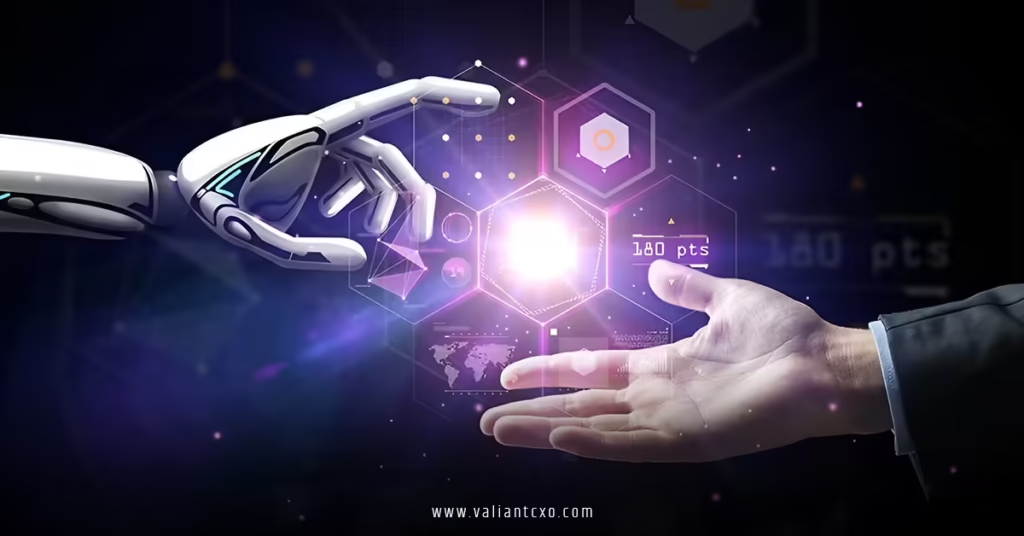How new technology impacts human-computer interaction is a question that’s reshaping the way we live, work, and play. Imagine a world where your computer understands your emotions, anticipates your needs, or even lets you control it with a flick of your wrist. That’s not sci-fi anymore—it’s happening now. From voice assistants to brain-computer interfaces, technology is revolutionizing how we interact with machines, making these interactions more intuitive, immersive, and, frankly, mind-blowing. In this article, we’ll dive into the ways emerging technologies are transforming human-computer interaction (HCI), why it matters, and what the future holds. Buckle up—it’s a wild ride!
What Is Human-Computer Interaction, and Why Should You Care?
Before we get into the nitty-gritty of how new technology impacts human-computer interaction, let’s break down what HCI actually is. At its core, HCI is the study and design of how humans and computers communicate. Think of it like a dance: the smoother the steps, the better the performance. Whether you’re typing on a keyboard, swiping on a touchscreen, or shouting “Hey, Siri!” at your phone, you’re engaging in HCI.
Why does this matter? Because the way we interact with tech shapes our daily lives. A clunky interface can make you want to hurl your laptop out the window, while a seamless one feels like an extension of yourself. As new tech emerges, it’s not just about faster processors or shinier screens—it’s about creating experiences that feel natural and effortless. Let’s explore how new technology impacts human-computer interaction and why it’s a game-changer.
The Evolution of HCI: From Punch Cards to Touchscreens
To appreciate how new technology impacts human-computer interaction, let’s take a quick trip down memory lane. Decades ago, interacting with computers meant punching holes in cards or typing complex commands into a terminal. It was like trying to talk to an alien with a bad translator. Fast forward to today, and we’ve got touchscreens, voice commands, and even gesture-based controls. These advancements didn’t just happen—they were driven by innovations in hardware, software, and a deep understanding of human behavior.
Today, technologies like artificial intelligence (AI), virtual reality (VR), and augmented reality (AR) are pushing the boundaries even further. They’re not just changing how we use devices; they’re redefining what it means to connect with technology. So, how exactly does new technology impact human-computer interaction? Let’s break it down.
Key Technologies Transforming Human-Computer Interaction
How new technology impacts human-computer interaction can be seen in a handful of groundbreaking innovations. These technologies aren’t just cool gadgets—they’re reshaping the way we communicate with machines, making interactions more human-like and intuitive. Let’s dive into the big players.
Artificial Intelligence: The Brain Behind Smarter Interactions
AI is like the wizard behind the curtain, making computers smarter and more responsive. From chatbots to predictive text, AI is at the heart of how new technology impacts human-computer interaction. Ever notice how your phone suggests the next word before you type it? That’s AI learning your habits. Or how about virtual assistants like Alexa or Google Assistant? They listen, learn, and respond in ways that feel almost human.
AI-powered natural language processing (NLP) is a huge part of this shift. It allows computers to understand and respond to human speech, making voice interfaces a game-changer. Imagine dictating an email or asking your car to find the nearest coffee shop—it’s all possible because AI is getting better at understanding context, tone, and even slang. According to IBM’s insights on AI, NLP is advancing so rapidly that it’s becoming a cornerstone of modern HCI.
But it’s not just about talking. AI also enables adaptive interfaces that mold to your preferences. For example, streaming platforms like Netflix use AI to recommend shows based on your viewing history. It’s like having a friend who knows your taste in movies better than you do. As AI continues to evolve, expect even more personalized and intuitive interactions.
Virtual and Augmented Reality: Stepping Into the Digital World
If AI is the brain, VR and AR are the eyes and ears of how new technology impacts human-computer interaction. VR plunges you into fully immersive digital worlds, while AR overlays digital info onto the real world. Both are rewriting the rules of HCI by making interactions more visual and spatial.
Picture this: instead of clicking through a website, you’re walking through a virtual store, picking up products with your hands (or a controller). VR makes this possible by creating environments where you can interact with digital objects as if they’re real. AR, on the other hand, enhances your surroundings—like seeing navigation directions projected onto your windshield while driving. Microsoft’s HoloLens is a prime example, blending AR with real-world tasks for industries like healthcare and engineering.
These technologies make interactions more engaging by tapping into our natural senses. But they’re not perfect yet—motion sickness and clunky headsets are still hurdles. Still, as hardware improves, VR and AR are set to make HCI more immersive than ever.
Gesture and Motion Controls: Wave Hello to the Future
Ever wished you could control your computer like a Jedi? Gesture and motion controls are making that a reality. Technologies like Microsoft’s Kinect or Leap Motion track your movements, letting you interact with devices without touching them. This is a big deal for how new technology impacts human-computer interaction, especially in fields like gaming and healthcare.
For instance, surgeons can use gesture controls to manipulate 3D models during surgery without breaking sterility. In gaming, waving your hand to swing a virtual sword feels way more exciting than pressing a button. These systems rely on advanced sensors and cameras to interpret your movements, creating a seamless bridge between you and the machine.
The downside? They’re not always precise, and learning new gestures can feel like learning a new language. But as these systems get smarter, they’re opening up new ways to interact that feel straight out of a sci-fi movie.
Brain-Computer Interfaces: Mind Over Machine
Okay, this one’s wild. Brain-computer interfaces (BCIs) let you control devices with your thoughts. Yes, you read that right—your thoughts! Companies like Neuralink are working on tech that connects your brain directly to computers, bypassing keyboards, mice, or even voice commands. This is the frontier of how new technology impacts human-computer interaction.
Imagine typing a message just by thinking about it or controlling a prosthetic limb with your mind. BCIs could revolutionize accessibility, helping people with disabilities interact with technology in ways that were once impossible. They’re still in early stages, with challenges like safety and ethics to address, but the potential is staggering. Could BCIs make traditional interfaces obsolete? Only time will tell.
The Benefits of These Technological Shifts
So, why should you care about how new technology impacts human-computer interaction? Because it’s making life easier, more inclusive, and—dare I say—more fun. Here’s how:
Enhanced Accessibility
New tech is breaking down barriers. Voice assistants help visually impaired users navigate devices, while gesture controls empower those with mobility challenges. BCIs could take this even further, giving everyone a chance to engage with technology on their terms.
Increased Efficiency
Smarter interfaces mean less time fumbling with clunky systems. AI-powered predictive tools and voice commands let you get things done faster, whether it’s scheduling a meeting or editing a photo. It’s like having a personal assistant who never sleeps.
Immersive Experiences
From VR gaming to AR training simulations, new tech makes interactions more engaging. It’s not just about getting the job done—it’s about enjoying the process. Who wouldn’t want to feel like they’re inside their favorite game or exploring a digital museum?

Challenges and Considerations
Of course, how new technology impacts human-computer interaction isn’t all sunshine and rainbows. There are hurdles to overcome, and they’re worth talking about.
Privacy Concerns
With AI tracking your habits and BCIs reading your thoughts (yikes!), privacy is a big issue. How do we ensure our data stays safe? Companies need to prioritize transparency and security to keep users’ trust.
Learning Curve
New interfaces can be intimidating. Ever tried teaching your grandma to use a touchscreen? Now imagine explaining a BCI. Designers must focus on user-friendly systems to make these technologies accessible to everyone.
Ethical Questions
BCIs and AI raise big ethical questions. Should a computer know your emotions? What if it manipulates them? As we push the boundaries of HCI, we need to think carefully about the implications.
The Future of Human-Computer Interaction
So, where are we headed? How new technology impacts human-computer interaction is only going to get more exciting. Picture a world where your devices anticipate your needs before you even realize them. Maybe your smart home adjusts the lighting based on your mood, or your computer writes a report while you think about the ideas. The possibilities are endless.
As these technologies evolve, the focus will be on making interactions even more seamless and human-centric. Designers will need to balance innovation with accessibility, ensuring no one gets left behind. One thing’s for sure: the way we interact with computers is becoming less about “using” them and more about “connecting” with them.
Conclusion
How new technology impacts human-computer interaction is transforming our world in ways we’re only beginning to understand. From AI making devices smarter to VR immersing us in digital realms, these advancements are making technology more intuitive, accessible, and engaging. But with great power comes great responsibility—privacy, ethics, and usability must stay at the forefront. As we move forward, let’s embrace these changes with curiosity and caution, ready to explore a future where humans and computers work together like never before. So, what’s next? Dive into this tech revolution and see where it takes you!
FAQs
1. How does AI contribute to how new technology impacts human-computer interaction?
AI enhances HCI by enabling natural language processing, predictive text, and adaptive interfaces, making interactions more intuitive and personalized, like having a conversation with a smart friend.
2. What role do VR and AR play in how new technology impacts human-computer interaction?
VR and AR create immersive and spatial experiences, allowing users to interact with digital environments in ways that feel real, from virtual walkthroughs to augmented navigation.
3. Are there privacy risks with how new technology impacts human-computer interaction?
Yes, technologies like AI and BCIs collect sensitive data, raising concerns about security. Companies must prioritize transparency to protect user trust.
4. Can new technology in HCI benefit people with disabilities?
Absolutely! Voice assistants, gesture controls, and BCIs make technology more accessible, empowering users with disabilities to interact in new ways.
5. What’s the future of how new technology impacts human-computer interaction?
The future promises seamless, human-centric interactions, with devices anticipating needs and blending into daily life, driven by advancements in AI, VR, and BCIs.
Read Also:valiantcxo.com


